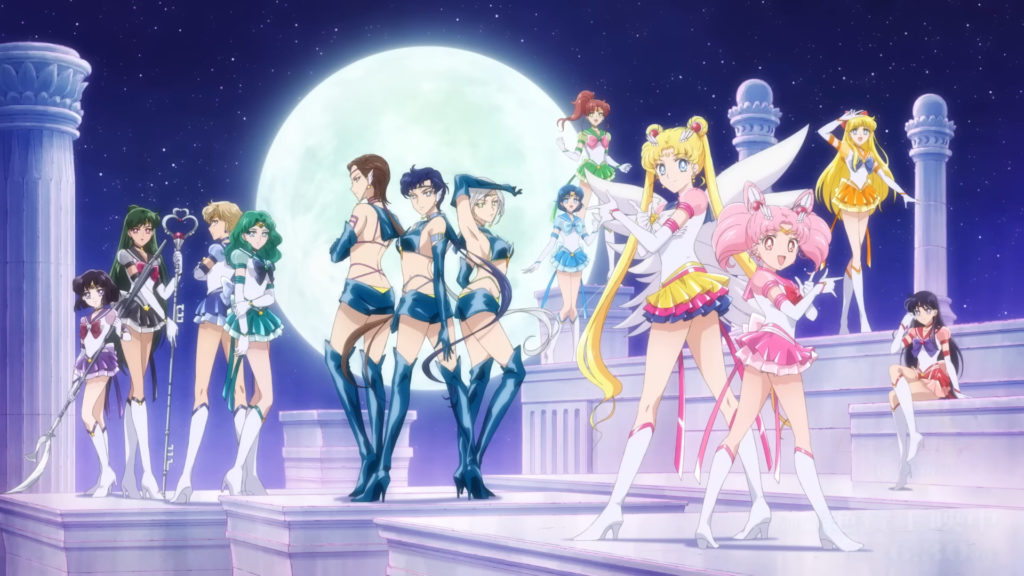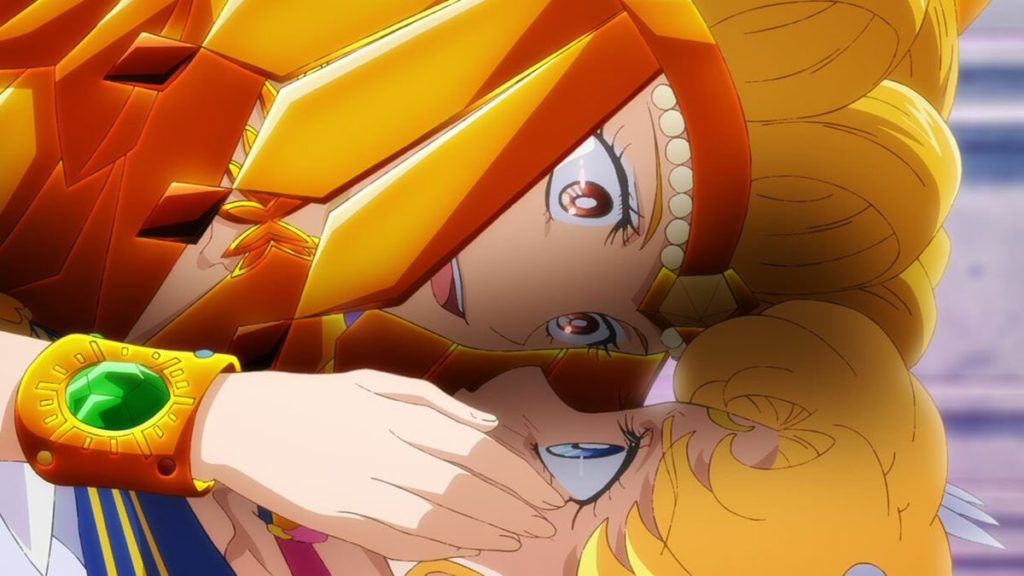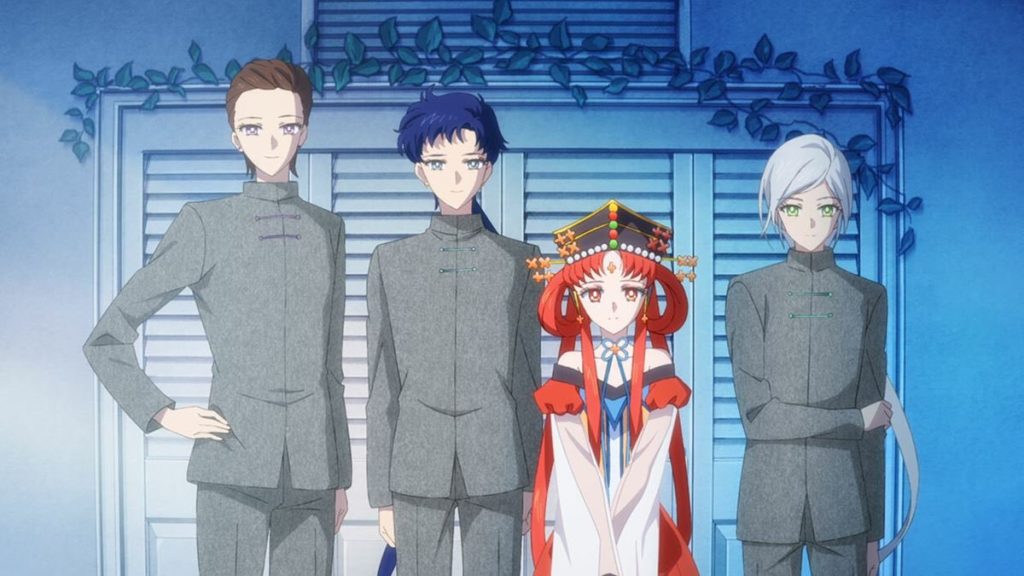Pretty Guardian Sailor Moon Cosmos: The Movie Parts 1 and 2 Streaming Review
Speaking as a long term UK ‘moonie’ fan, it seems weird to be calling this the ‘end of Sailor Moon’. Sure, it is the end of the ‘Crystal’ saga, the reboot of the 90s anime which is meant to be closer to the original manga story, however I cannot see this as the end of Sailor Moon because we never got the full story to begin with.
I said this briefly in my Eternal movie review but will reiterate here: the original DiC heavy-edited version of Sailor Moon, which came out in the 90s, was the first introduction to the series for many English-speaking fans. But it was thanks to devoted fans (and the early rise of the Internet) that we learned of the censorship and cuts to the original story of the anime, with the manga being licenced (originally by Mixx Entertainment, which later rebranded to Tokoyopop) not long after. However, outside of this DiC cut of the first two seasons, the UK has never seen the original uncut anime or even past season 2 of the DiC version. For UK moonies, who have not read the manga, the story has always been unfinished.
When the Crystal reboot started back in 2014, the site it was hosted on was kind enough to make it available in the UK too, but only for the first 2 seasons (yet again). The third season never got officially licensed here. Even years later, when Viz Media picked up all the rights to the original 90s anime and Crystal anime reboot, nothing was made available here. That was until the Eternal movie – and now the Cosmos movie – were made available for streaming thanks to Netflix making them accessible worldwide, which I am forever grateful for. Cosmos is an adaptation of the final arc of the original manga (or Stars arc, as it was known in the 90s anime) but are the films cosmically good? Or do they fade out like a distant star?
Usagi Tsukino is Sailor Moon, magical girl and protector of the Earth, alongside her friends and fellow guardians: Sailor Mercury, Mars, Venus, Jupiter, Saturn, Pluto, Uranus, and Neptune. They have fought off evil for several years now but this year is different; not only are they all starting high school, but Usagi’s boyfriend Mamoru is moving to the States for a year, and Chibi Moon (also known as Small Lady, and future daughter of Usagi and Mamoru) is going back to the 30th century now that her training is complete. As Usagi wishes her beloved off to the airport, however, a new enemy arrives with one goal in mind: to collect all the Sailor Crystals, the source of the Sailor Guardians’ power, and rule the galaxy. The enemy this time is not just any villain; she is none other than a Sailor Guardian herself, known as Sailor Galaxia. Not long after her arrival, mysterious beings called the Three Lights join Usagi’s school. But are they part of the new enemy’s team? Or have they come to help Sailor Moon to defeat this new evil?

The Cosmos story is split into two 80-minute movies, covering the whole final arc of the manga. If you own the original print of the Kodansha retranslation of Sailor Moon, then Part 1 is all of volume 11 and Part 2 contains most of volume 12. I say ‘most’ as there are a few things moved around, for example Galaxia’s flashback into why she become who she is, which was originally in volume 12 but was moved to the end of the first film. I understand why it was moved, however I think it would have been stronger if it was made to be the opening of Part 2, to get to know the villain before Usagi descends into her castle. In turn I would have moved a section at the top of Part 2, where Small Lady decides to return to the past with her team to help Sailor Moon, to the end of Part 1. Where it currently happens in Part 2, ends up interrupting an intense scene of Sailor Moon fighting her way to Galaxia, which I personally didn’t think worked.
There is also one new scene right at the very end, where Sailor Moon reunites with her family one last time, with the manga’s ending being post credits. I personally liked this; it bookends Part 2 of the movie nicely and ties some of the films’ themes together too. Aside from that, the sequence of events is the same, and like the Eternal Movies, these films are not paced as films, but feel more like TV episodes stitched together. The pacing is super-fast and jumps from one day to the next, little effort put into continuity between night and day, which I did find jarring at times, but it’s in line with the manga’s pacing, and Crystal’s mission to stick close to it as possible.
Both movies open with a nice homage to the original series with their own theme songs. Part 1 has the classic ‘Moonlight Legend’ by the Inner Guardians voice cast, with animation like the Sailor Moon S opening, but with added details. Part 2 has the original Stars theme ‘Sailor Star Song’ sung by the voice actresses of Sailor Kakyuu and the Starlights, with unique animation but several references to the Sailor Moon Stars opening too, which is a nice touch. There was also a new ending theme for both movies, ‘Moon Flower’ by Daoko, but I personally found it forgettable compared to other Sailor Moon songs in the series’ long catalogue. The score is once again by Yasuharu Takanashi and I personally found the second film to have the strongest tracks, especially as Sailor Moon experiences the River of Forgetfulness in Galaxia’s castle, and the big emotional fight with all the Guardians, before the one with Galaxia.
The final arc of the Sailor Moon manga is special for numerous reasons. First, when it was adapted for the original 90s anime, a few changes were made to the story. Whilst the changes were not as insurmountable as the changes made to the fourth arc, they were enough for fans of the original manga to cry out for a more faithful adaptation. Galaxia herself, for example, was made into more of a victim in the 90s anime version, with her trying to seal away a great evil inside herself but ending up corrupted into the final villain. And Sailor Chibi-Chibi, another new addition to the cast, was secretly a child-like version of Galaxia trying to escape the clutches of Chaos. Then there are the multitude of manga-exclusive characters, both on the heroes’ and villains’ sides, that were never shown in the 90s anime. This includes several enemies that Sailor Moon fights on the way to Galaxia, but also brief glimpses of other guardians from faraway planets that are said to have been lost to Galaxia.
All of that missing material from the manga, as well as the original intentions behind Chibi-Chibi and Galaxia, are now restored in this movie. As per Crystal’s MO, this anime version is faithful to the manga to a fault, including all of its intense emotions, story flaws and fascinating glimpses into the world building that Naoko Takeuchi incorporated into her manga. So, if you have been waiting to see Sailor Cosmos in colour after all these years, the day has finally come.

Another reason that this season is special is because it’s arguably the darkest arc of the manga. Whilst the previous manga arcs have dark elements in them, including genocide, suicide, child abuse and brainwashing, they have also always been balanced with light. Not just in the humour of the series, but in how each arc gently leads you into its themes and its villain’s motives, by having the enemies often targeting the Guardians with gimmicky, sometimes silly attacks at first, such as infiltrating jewellery stores, or changing animals into humans to trick our heroes. There has always been a feeling of campy joy from each villain in some capacity; it is why moonies love the members of the Black Moon, the tensions between the members of the Dark Kingdom, and so on.
The villain of this arc, however? Galaxia’s first act is to kill Mamoru/Tuxedo Mask right in front of Sailor Moon, and she does not get a minion to do it but does so by her own hands. It does not relent there; although the Sailor Starlights bring some light mystery to the story (despite its shortness), Sailor Galaxia’s shadow looms from the very start and Sailor Moon’s team is picked off one by one until she stands alone. And she learns that Galaxia is not just a villain who has destroyed worlds beyond Earth, but she is also a Sailor Guardian. Before this arc, that term was always associated with the good guys.
This is a nice continuation from the previous arc, as some of the Dead Moon Circus were actually Sailor Guardians themselves, brainwashed and stripped of their identity until Sailor Moon rescued them. This time, however, some Sailor Guardians chose to become evil, to follow Galaxia and collect all the Sailor Crystals for her, killing anyone who tries to stop her. It is a heart-wrenching move that takes the heroes you love and puts them against people who should be fighting alongside them, and the fight never gets any easier as Sailor Moon gets deeper into Galaxia’s lair.
Another reason this season feels darker is because in the final stretches of the manga, Sailor Moon is all on her own. It’s common for each arc to have her friends and other guardians either captured or incapacitated in some way, so that the big finale is left to Sailor Moon to gather up their strength from afar and save them. But this time Usagi is truly alone, with Galaxia killing everyone on Sailor Moon’s side without hesitation, and it’s not just for drama; it also works with the arc’s theme. This year is one for change for the whole team, not just going into a new school year. Loved ones are moving away, long distance relationships are hard to maintain even for the most devoted, and growing up involves people naturally drifting apart to pursue their dreams, goals, or other relationships.
We saw glimpses of the other Guardians’ dreams in the previous arc, and despite their wishes to stay by Usagi’s side, there will be times they cannot be there, like in this very arc. But Usagi learns, by the end, that despite being all alone, with her loved ones gone, she has the strength inside herself to carry on no matter what, no matter how dark and hopeless things may become. And even if the fight may go out within her there is always another way to find hope, which is what Usagi does at the very end, and what reminds Chibi-Chibi that hope is never far away, despite how far your loved ones may be. Although the finale is very lore-heavy, and some of it still goes over my head in the moment, I think the final message of Usagi having the strength to accept the good and bad of the world, even after having lost everything, is a powerful one regardless.
Toei and Studio Deen co-produced these films and the animation is very much consistent with the previous Crystal anime film. The key moments from the manga are animated lovingly here, it’s not going to win awards for animation or anything, but I did love seeing the Galaxy Cauldron in its full glory, with a stunning mixture of colours to represent its mystique. The various battles are really good too, and intense to watch as they progress. The Sailor Starlights are also given all-new transformation animations, which is a surprise, with less emphasis on their bodies (as the changing of gender is less focused on in this adaptation) but more movement; I liked it! My only gripe with the animation is Usagi’s ring that Mamoru gives her at the start: I swear it kept changing size and it was distracting.

The Netflix release of the movies comes with multiple dub and sub options, including the return of the Viz English dub cast. All of the core cast return and give excellent performances for what is surely to be their last time as these characters. There are a few new cast members for the dub too; my personal favourite was Carrie Keranen as Galaxia. I know her as Alya from Miraculous: Tales of Ladybug and Cat Noir but she did a really good performance balancing Galaxia’s cruel, cold nature with hints of sadness in the second film. I was a little disappointed in the choice for Sailor Cosmos, however; in the original Japanese, they got a veteran actress from the live action series (Keiko Kitagawa) to voice her as a nice homage to what had come before, however the English dub just used Sailor Moon’s voiceover, Stephanie Sheh. It makes sense considering her identity, but I was hoping that the Viz team would have got a legacy dub actress to voice Sailor Cosmos. Never mind.
The Cosmos films leave me with mixed feelings. I don’t want to see this as the finale of Sailor Moon as we never got the full story to begin with, but there’s no denying that this is the end of brand new Sailor Moon for, at least, a very long while. Taken as solo films, they are not newcomer friendly; they’re paced extremely weirdly and there is so much exposition for the audience to absorb. But as a long time moonie, I found these films beautiful and nostalgic. I am glad we got to see these fan-favourite manga characters brought to life, and the films were a fun, emotional ride. They may not be the best adaptation of Sailor Moon, but they are certainly a heartwarming version I won’t forget for a long while.
Pretty Guardian Sailor Moon Cosmos: The Movie Parts 1 & 2 are now streaming on Netflix. Available in Japanese, English, Spanish, French, Italian and Portuguese dubs with English, French, Ukrainian, Arabic and Polish subtitles.


